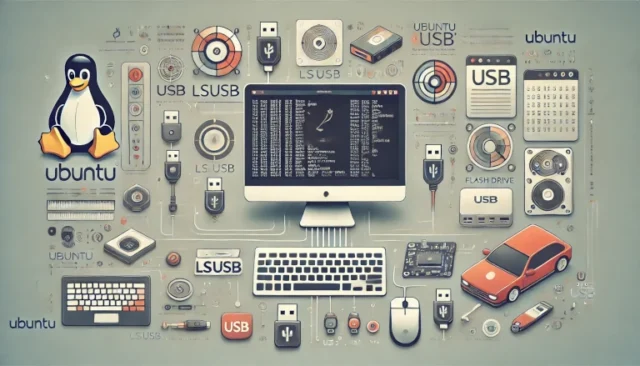Managing USB devices on Linux systems, especially Ubuntu, becomes a breeze with usbutils—a package of utilities designed for userspace USB management. Whether you’re a tech-savvy developer troubleshooting USB connections or a beginner exploring Linux, understanding how to install, compile, and use usbutils can save time and enhance system management. This guide covers every detail, including setup, usage, and potential troubleshooting tips, ensuring you have a seamless experience.
What is usbutils?
usbutils is a set of command-line utilities primarily used for listing and gathering detailed information about USB devices connected to your Linux system. These tools are especially helpful for developers and administrators who need to debug or inspect USB-related issues. The most notable tool in this package is lsusb, which provides detailed data about each USB device on your system.
How usbutils Works
At its core, usbutils interacts with the Linux kernel’s USB subsystem. It fetches information about connected devices and represents it in a user-readable format. By using the /proc/bus/usb or /sys/bus/usb interfaces, the tools extract critical details such as vendor ID, product ID, and device descriptors.
💡 Tip: The utility uses a database file (
usb.ids) to resolve vendor and product names into human-readable formats. Keeping this file updated ensures accurate device information.
Setting Up usbutils on Ubuntu
Installing usbutils from Ubuntu Repositories
The easiest way to get started with usbutils is by installing it directly from the official Ubuntu repositories. Use the following command:
sudo apt update
sudo apt install usbutils
This installs the utilities and ensures you have the lsusb command available.
Compiling usbutils from Source
For advanced users or those seeking the latest version, compiling usbutils from source is an excellent option. Follow these steps:
First, install the required dependencies to ensure your system is ready:
sudo apt update
sudo apt install build-essential libusb-1.0-0-dev git
Clone the usbutils repository from GitHub to get the latest source code:
git clone https://github.com/gregkh/usbutils.git
cd usbutils
Compile the source code by running the following commands:
./autogen.sh
./configure
make
Finally, install the compiled binaries to your system:
sudo make install
Ensure /usr/local/bin is in your PATH to access the installed tools.
Using usbutils on Ubuntu
Once installed, usbutils provides tools like lsusb for listing USB devices. Use the following command to list connected USB devices:
lsusb
To get more verbose information, which includes descriptors and detailed output, use:
lsusb -v
This level of detail is especially useful for debugging or identifying specific USB devices.
Common Issues and Solutions
Device Not Detected
If a USB device is not showing in the lsusb output, check physical connections and ensure the USB ports are enabled in BIOS/UEFI. You can also verify USB support in the kernel using:
dmesg | grep usb
Corrupted usb.ids File
When device details appear as “unknown,” update the usb.ids file to ensure it includes the latest database:
sudo update-usbids
Compilation Errors
If errors occur during the make process, ensure all dependencies are correctly installed. If the issue persists, clean the build directory and retry:
make clean
make
This process resets the build and resolves most issues caused by leftover files.
Why Choose usbutils?
usbutils stands out for its lightweight nature and powerful capabilities. It allows users to explore detailed insights into USB devices, making it an indispensable tool for both administrators and developers. Moreover, its flexibility ensures compatibility across various Linux distributions.
Final Thoughts: Simplify Your USB Management
Understanding and using usbutils unlocks efficient USB device management on Ubuntu. Whether you need quick insights with lsusb or advanced debugging with verbose outputs, this guide ensures you’re equipped with the knowledge to excel. By addressing common challenges and detailing setup steps, we hope to empower you to tackle USB-related tasks with confidence.
